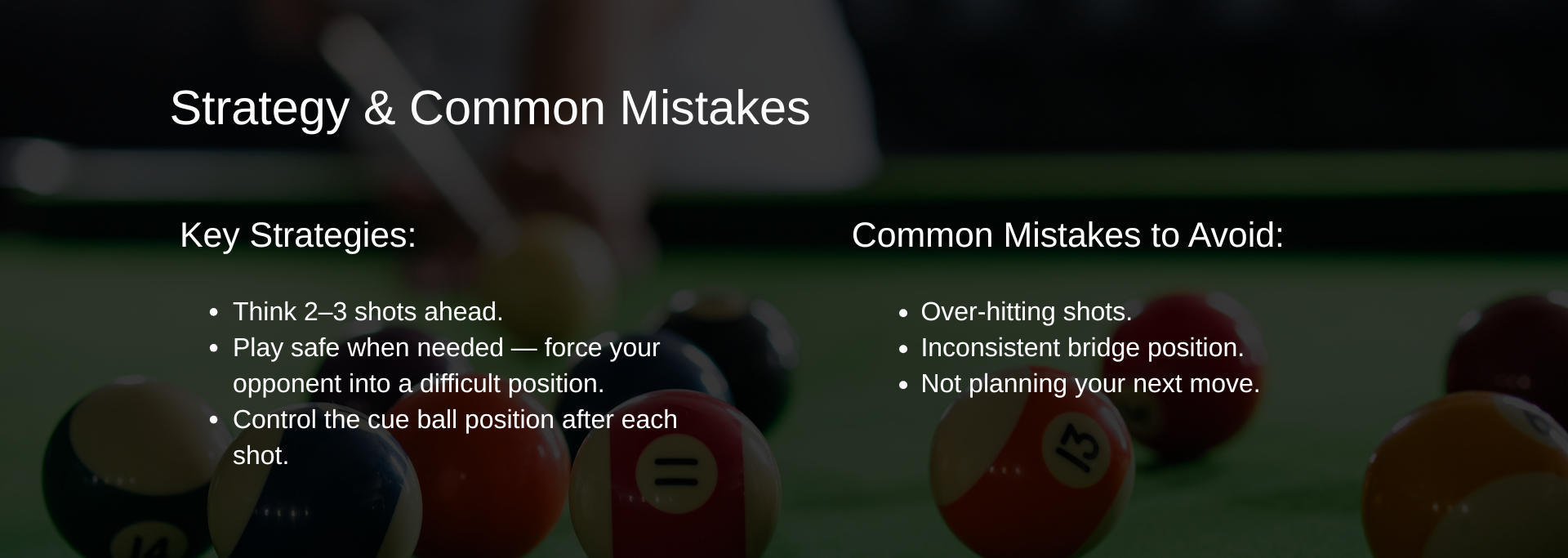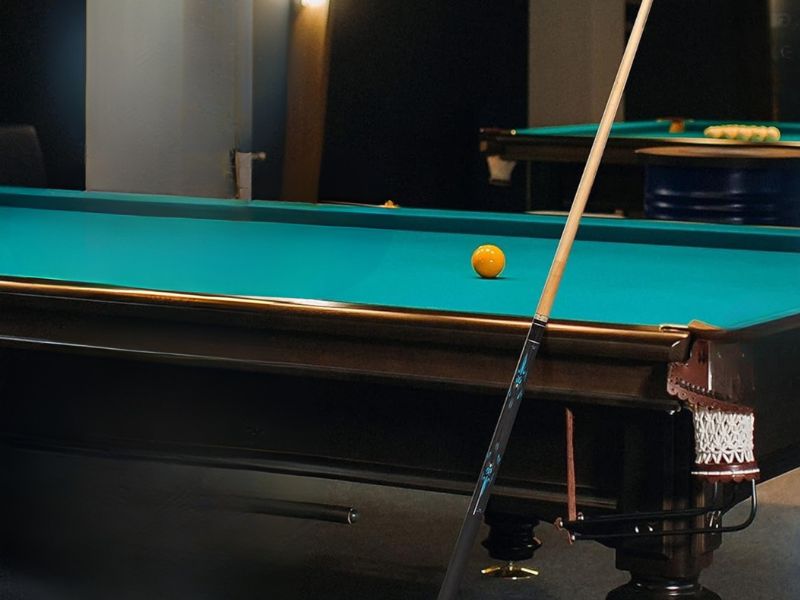
Equipment & Table Setup
The right gear and setup will make your learning curve shorter and your shots cleaner.
- 7 ft (bar), 8 ft (home), 9 ft (tournament).
- Balance, weight, and tip type affect control.
- Standard pool set is 16 balls (1 cue ball + 15 object balls).
- Triangle for 8-ball, diamond for 9-ball.
- Helps prevent miscues and improves spin control.
💡 Pro Tip: A cue that feels balanced in your hand is worth the investment — see our Legendary Clans Edition cues designed for precision and control.
Rules of Popular Games
-

8-Ball
Objective: Pocket all your group of balls (solids or stripes), then the 8-ball last.
- Legal break: At least 4 balls hit a cushion or a ball is pocketed.
- Foul: Cue ball scratched or 8-ball pocketed early.
-

9-Ball
Objective: Pocket the 9-ball legally by hitting the lowest-numbered ball first.
- Sequential play is mandatory.
- Fast-paced and tactical.
-

Straight Pool
Objective: Reach a set number of points by pocketing any ball on the table.
- Players must call both the ball and the pocket.
- Continuous scoring format allows long runs of shots.
-

Cutthroat Pool
Objective: Three players each “own” a set of balls (1–5, 6–10, or 11–15). The goal is to be the last player with at least one ball still on the table.
- Break: Any ball pocketed stays down, and play continues.
- You can target any opponent’s ball — once all of your balls are gone, you’re out of the game.
📥 Want the complete rules for 11 billiards games? Download our free ebook.
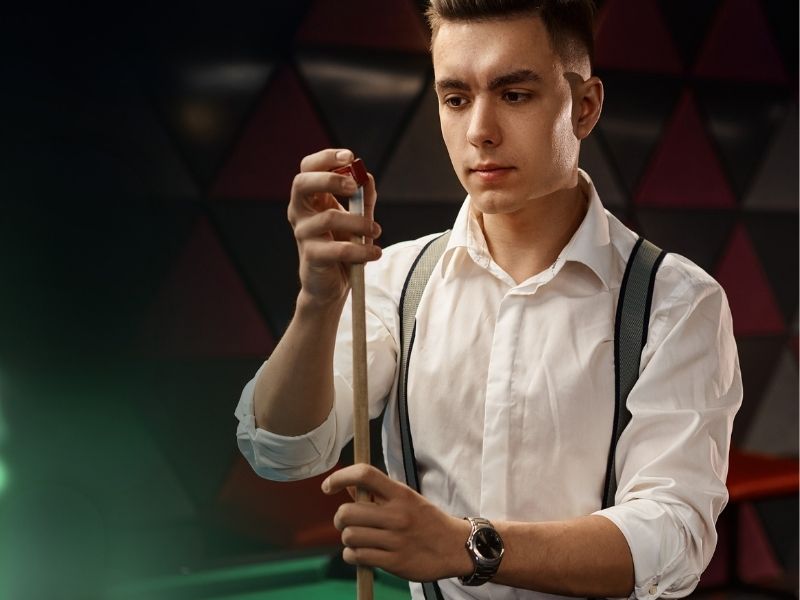
Basic Techniques
Grip: Hold the cue lightly — firm enough for control, loose enough for fluid movement.
Bridge:
- Open bridge — stable and easy for beginners.
- Closed bridge — more control for spin shots.
Stroke Mechanics: Smooth, straight, and level. Keep your head still and follow through fully.
Cue Ball Control: Learn draw (backspin), follow (topspin), and English (side spin).
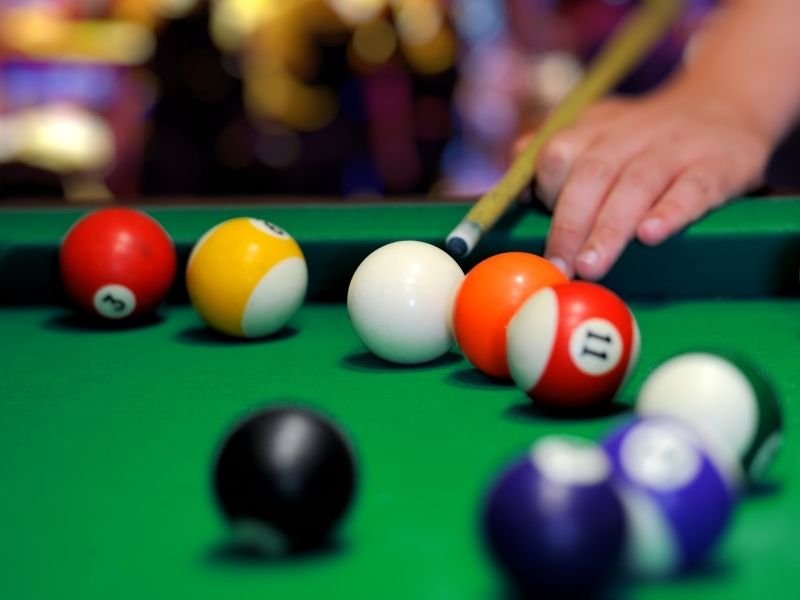
Learning Path
Follow this progression for steady improvement:
- Learn equipment and rules
- Practice stroke mechanics and cue ball control
- Apply strategy and positional play
- Review and drill regularly.
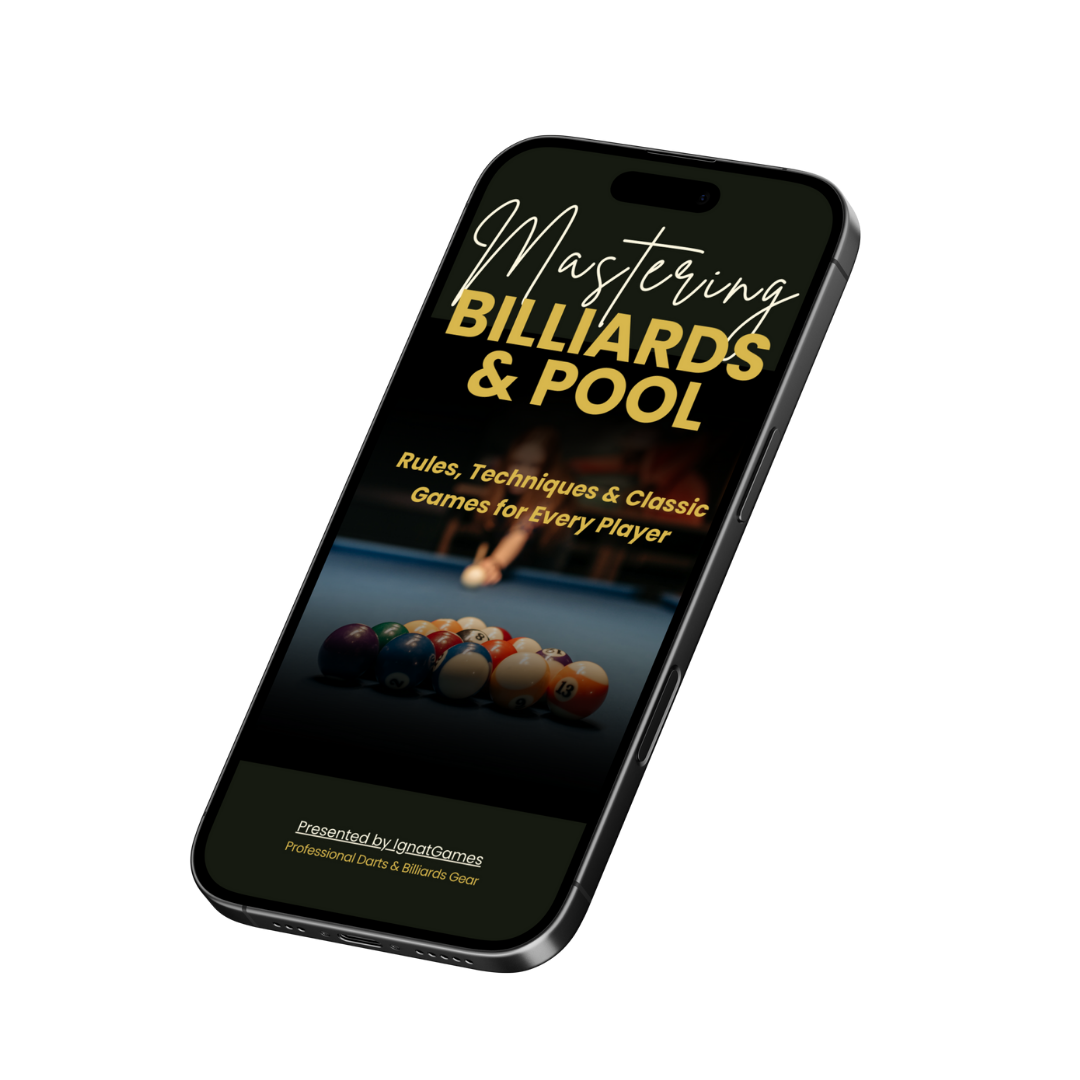
📥 Want the complete rules for 11 billiards and pool games?
This guide teaches the basics of billiards and introduces 11 different games, complete with rules and scoring, to help players of all levels enjoy the game.
Frequently Asked Questions
What’s the best cue weight for beginners?
19 oz is a common starting point for balance between control and power.
Do I need to chalk before every shot?
Not always, but chalk regularly to maintain control and prevent miscues.
How often should I practice?
Even 20 minutes daily can improve muscle memory and accuracy.
What’s the difference between an open bridge and a closed bridge?
An open bridge is easier for beginners and offers more visibility over the cue, while a closed bridge provides greater control for advanced shots, especially when applying spin.
Why does the cloth speed matter in billiards?
Faster cloths make balls travel further with less force, while slower cloths require more power. Tournament cloths are typically faster to allow smoother play.
How do I improve my aiming in billiards?
Use the ghost ball method — visualize an imaginary ball where the cue ball needs to strike the object ball to make the shot. Consistent practice with this method improves shot accuracy over time.







